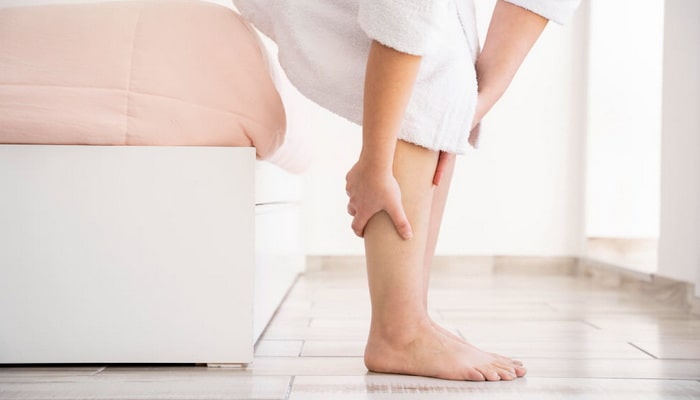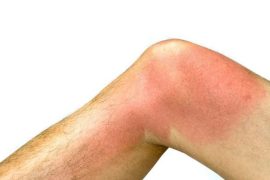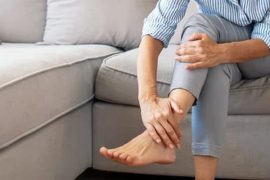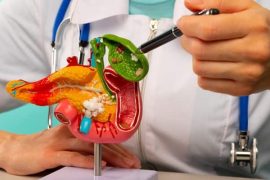Зміст
Lifestyle-related diseases kill hundreds of thousands of people every year. One of the most dangerous is atherosclerosis. This disease is primarily associated with heart disease. However, atherosclerosis can also affect the vessels of the lower extremities. Its complications include, first, acute ischemia of the limbs, which can even lead to amputation. In this article we will tell you how atherosclerosis manifests itself, what are its main causes and how to effectively combat this disease.
Atherosclerosis of the lower extremities – symptoms
Atherosclerosis of the lower extremities is a disease that impacts the vessels of the legs. Its course involves a narrowing of the arteries, the main reason for which is the deposition of cholesterol deposits in them. This means less blood reaches the lower extremities, less blood circulates, and less oxygen and nutrients reach the lower extremities. Atherosclerosis can lead to dangerous ischemia of the lower extremities.
In the initial phase, this disease manifests itself primarily as a loss of sensation in the legs, as well as other unpleasant sensations such as tingling, numbness or coldness of the legs, even in warm rooms. One of the symptoms of atherosclerosis is the so-called intermittent claudication. This is pain that appears after intense exercise, such as walking or marching, and disappears after rest. This is due to the fact that oxygen-carrying blood reaches the legs more slowly.
In later stages of the disease, much more severe symptoms may appear. Pain may now be present even at rest. The skin becomes pale, skin lesions occur, and wounds heal much worse. The disease also affects the nails, which become brittle and brittle, and hair loss occurs. Over time, muscle atrophy and even necrosis of the lower limb may occur. In this situation, amputation is often the only solution.
Atherosclerosis of the lower extremities – causes
Atherosclerosis of the lower extremities can impact the patient due to genetic as well as environmental conditions. The main cause of this disease is hyperlipidemia, i.e., significantly increased levels of cholesterol in the blood. Obesity, being overweight, and eating highly processed foods rich in trans fats also contribute to the development of atherosclerosis. People who smoke cigarettes and drink alcohol to excess are also at risk of developing the disease. Atherosclerosis can also impact people who are under excessive stress.
Atherosclerosis of the lower extremities – treatment
A person who suspects that he has atherosclerosis should first visit a family doctor, who will conduct a physical examination and, if necessary, refer the patient for specialized examinations. A vascular surgeon treats the disease and its consequences. During the examination, the specialist may discover that the patient has a weakened pulse below the narrowing of the arteries, as well as inconsistent blood flow in the vessels.
To professionally diagnose atherosclerosis, it is necessary to conduct laboratory tests. The family doctor or specialist may refer the patient for a lipid profile, C-reactive protein level, blood test, and urea and creatinine levels. The doctor also performs imaging procedures. The most popular are Dopplerography and angiography. It involves injecting contrast into the blood vessels and then performing a CT scan. This will highlight areas where the arteries have narrowed.
Atherosclerosis of the lower extremities – natural treatment
A patient diagnosed with atherosclerosis can use several natural methods to combat this disease. They can be an excellent addition to pharmacotherapy. One of the best remedies is common garlic. It contains many substances with anti-inflammatory, antibacterial and detoxifying properties. Eating garlic also has a positive effect on fat metabolism and the cardiovascular system.
Another product that can be found in the kitchen that helps in the fight against atherosclerosis is green tea. An infusion prepared from it significantly reduces cholesterol levels in the blood. However, remember that for the most visible results, you should use a concentrated extract. Moreover, drinking too much green tea can cause problems with the absorption of iron and folic acid (vitamin B9). For people struggling with atherosclerosis, we recommend products such as chia seeds and Spanish sage.
Atherosclerosis of the lower extremities – herbal treatment
On the shelves of pharmacies and stores, you can find various herbal mixtures that help fight atherosclerosis. It is especially worth paying attention to those that contain milk thistle. This plant contains substances with anti-inflammatory and antioxidant properties, as well as numerous vitamins. It is also worth paying attention to red rice extract. It contains monacolin K, which slows down the process of cholesterol synthesis in the body.








